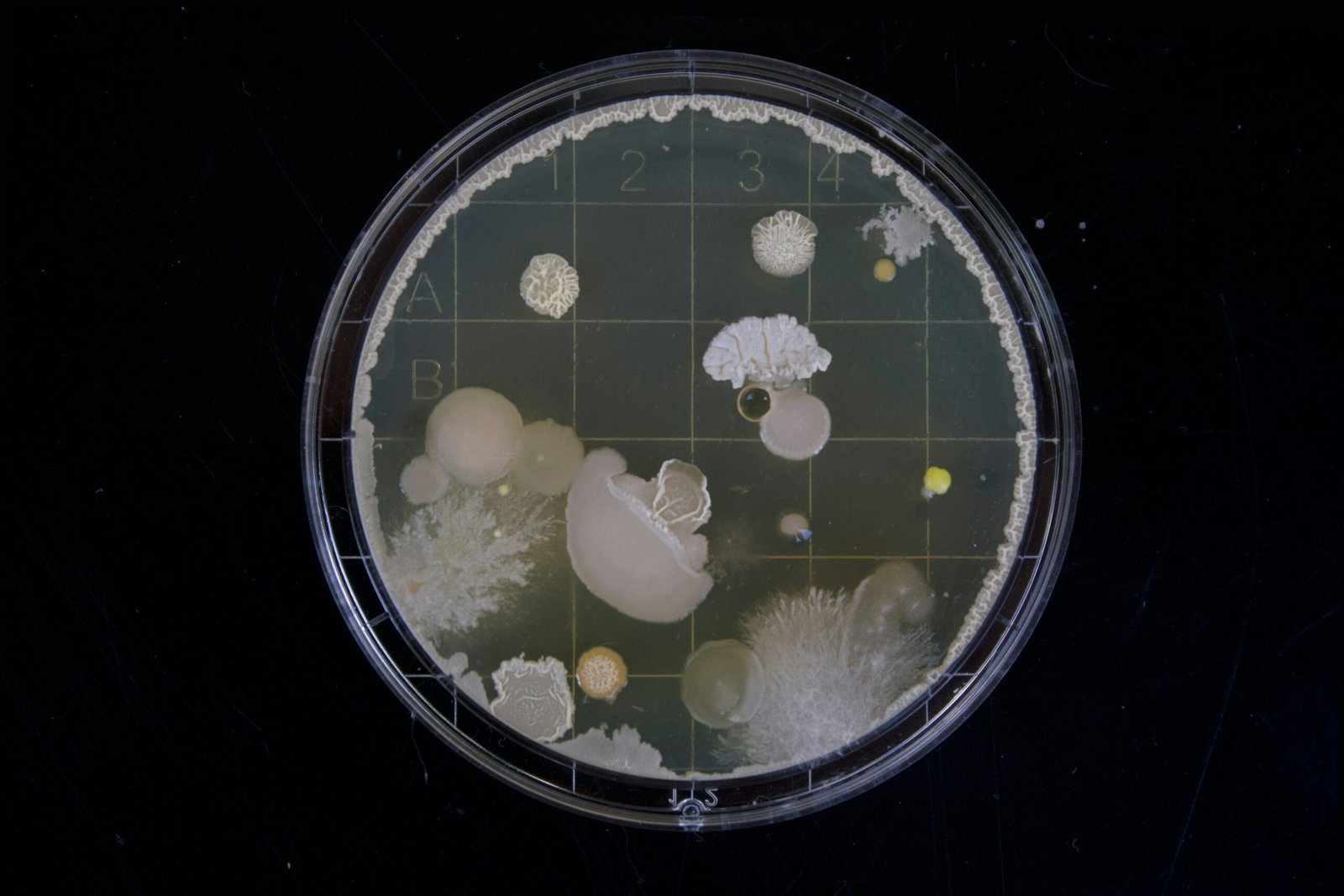Introduction to Microbes
Microbes, or microorganisms, are entities of significant interest in biology and environmental science. They are tiny, often single-celled, organisms that can only be observed under a microscope. The term “microbe” encompasses a diverse group of life forms, including bacteria, fungi, viruses, archaea, and unicellular eukaryotes
The discovery of microbes began with the advent of the microscope. In the late 17th century, Antonie van Leeuwenhoek, a Dutch scientist, made groundbreaking observations using a microscope of his own design. He documented his findings, providing the first visual evidence of these minute organisms, which he referred to as “animalcules.” This seminal moment opened up a new realm of scientific inquiry, leading to the recognition of the profound role that microbes play in various ecosystems.
Microbes are omnipresent, colonizing diverse environments, from the deepest oceanic trenches to the upper layers of the atmosphere. They inhabit soil, water, and air and are integral components of the human microbiome, residing in and on our bodies. Each habitat harbors distinct microbial communities, adapted to the specific conditions of their environment.
The ubiquity of microbes underscores their versatility and adaptability. They execute a myriad of roles essential to the equilibrium of ecosystems. In soil, they are pivotal in nutrient cycling, assisting in the decomposition of organic matter and the liberation of vital nutrients that sustain plant growth. In aquatic systems, microbes contribute to the regulation of chemical processes, maintaining water quality and supporting aquatic life. Within the human body, the microbiome plays crucial roles in digestion, immune function, and overall health.
This brief introduction sets the foundation for a detailed exploration of the different types, roles, and significances of these microscopic powerhouses. As we delve deeper into the world of microbes, their astonishing diversity and intricate interactions will be unveiled, highlighting their indispensable presence in our lives and the environment.
Types of Microbes
Microbes, also known as microorganisms, encompass a wide array of microscopic life forms. These include bacteria, viruses, fungi, protozoa, and algae. Each type of microbe is characterized by unique structural features and biological functions, which differentiate them from one another.
Bacteria are single-celled organisms that lack a nucleus. Their genetic material is contained within a single, circular chromosome. Bacteria can be classified based on their shape, staining properties, and metabolic activities. They are diverse in both function and habitat, playing critical roles in processes such as nitrogen fixation, decomposition, and human health.
Viruses are much smaller than bacteria and require a host cell to replicate. They consist of genetic material, either DNA or RNA, encased in a protein coat called a capsid. Unlike other microbes, viruses are acellular and do not carry out metabolic processes on their own, which often places them at the boundary between living and non-living entities.
Fungi can be unicellular, like yeasts, or multicellular, like molds and mushrooms. They have a distinct cell wall made of chitin and obtain nutrients through absorption. Fungi are crucial in nutrient cycling within ecosystems and have applications in food production, medicine, and biotechnology.
Protozoa are single-celled eukaryotes that exhibit animal-like behaviors such as movement and predation. They are typically motile, using structures like cilia, flagella, or pseudopodia for locomotion. Protozoa play significant roles in the food chain and can influence the population dynamics of other microorganisms.
Algae are photosynthetic organisms that can be found in a range of environments. They can be unicellular or multicellular and have chlorophyll which enables them to carry out photosynthesis. Algae are essential in aquatic ecosystems as primary producers and are also utilized in biotechnology for biofuel production and bioremediation.
The classification and taxonomy of microbes involve categorizing them based on their evolutionary relationships and genetic characteristics. Modern techniques such as genomic sequencing have vastly improved our understanding of microbial diversity, allowing for more precise identification and classification. This comprehensive taxonomy enhances our ability to study and utilize microbes in various scientific and industrial applications.
Beneficial Roles of Microbes
Microorganisms, despite their microscopic size, perform vital roles that profoundly impact ecosystems and human activities. Among the numerous beneficial functions of microbes, one of the most notable is their role in agriculture. Nitrogen-fixing bacteria, particularly those within the genus Rhizobium, are essential for converting atmospheric nitrogen into ammonia, a form that plants can readily assimilate. This process not only alleviates the need for synthetic fertilizers but also enhances soil fertility, sustaining crop productivity and ecosystem health.
In the realm of food production, microbes play a critical part in fermentation processes essential for creating a variety of food items. Yeasts, such as Saccharomyces cerevisiae, facilitate the fermentation of sugars into alcohol and carbon dioxide, which is fundamental in bread baking, brewing beer, and producing wine. Similarly, lactic acid bacteria contribute to the production of fermented dairy products like yogurt and cheese, aiding in texture development and preservation while also imparting distinctive flavors.
Moreover, the relationship between humans and their gut microbiota underscores another significant beneficial aspect of microbes. The human gut hosts trillions of microorganisms that aid in digestion, synthesize essential vitamins, and compete with pathogenic microbes, thus fortifying the immune system. The balanced symbiosis between humans and gut microbiota is crucial for overall health and well-being, influencing metabolic and even psychological processes.
Microbes also play a indispensable role in environmental processes such as nutrient cycling and bioremediation. For instance, various bacteria and fungi decompose organic matter, releasing nutrients back into the soil, which enhances plant growth and maintains ecological balance. In bioremediation, specific microbes degrade pollutants like oil spills or heavy metals, thereby cleaning up contaminated environments and reducing harmful impacts on ecosystems.
Microbial applications extend to biotechnology, where engineered microbes produce pharmaceuticals, biofuels, and other valuable bioproducts. These applications highlight the versatility and indispensability of microbes in advancing technology and addressing global challenges such as food security, environmental sustainability, and human health.
Pathogenic Microbes and Diseases
Pathogenic microbes, a subset of microorganisms, are often the culprits behind various diseases affecting plants, animals, and humans. These infectious agents include bacteria, viruses, and fungi, each with distinct mechanisms of pathogenicity. Understanding these mechanisms—from cellular invasion to toxin production—is crucial for developing effective treatments and preventive measures.
Bacterial infections are perhaps the most well-documented. Examples include Streptococcus pneumoniae, responsible for pneumonia, and Escherichia coli, which can cause severe food poisoning. These bacteria often employ virulence factors such as toxins and enzymes to invade host tissues and evade the immune system. Transmission typically occurs through direct contact, contaminated food or water, and airborne particles.
Viral infections, such as those caused by the influenza virus and the human immunodeficiency virus (HIV), present distinct challenges due to their ability to hijack host cellular machinery for replication. Viruses can spread via bodily fluids, airborne particles, and insect vectors. The rapidly mutating nature of viruses, such as the influenza virus, complicates vaccine development and poses significant public health challenges.
Fungi, although less frequently discussed, also contribute to a variety of diseases. For example, Candida albicans can lead to infections ranging from superficial candidiasis to systemic candidemia in immunocompromised individuals. Fungal spores can be airborne, making respiratory transmission common, especially in hospital settings.
Emerging infectious diseases, such as Ebola and Zika virus outbreaks, underscore the ever-present threat of pathogenic microbes. These pathogens often jump from animal reservoirs to humans, facilitated by environmental changes and increased human-animal interactions. Antibiotic resistance further exacerbates the issue, making once-treatable infections increasingly difficult to manage. Multi-drug resistant bacteria like methicillin-resistant Staphylococcus aureus (MRSA) represent a growing global health crisis, necessitating urgent research and innovation in new antimicrobial therapies.
The impact of pathogenic microbes on global health is profound. Beyond individual suffering, outbreaks can destabilize economies, overburden healthcare systems, and spur widespread panic. Addressing these threats requires a multifaceted approach, including surveillance, vaccine development, public education, and rigorous infection control measures.
Microbes in Biotechnology
Microbes play a pivotal role in biotechnology, driving innovations that reshape our understanding and application of biological systems. Microbial biotechnology harnesses the genetic and metabolic capabilities of these organisms for various applications, including genetic engineering, drug production, and industrial processes. A prime example is the use of bacteria, such as Escherichia coli, in the production of insulin. Through recombinant DNA technology, human insulin genes are introduced into bacterial cells, enabling the large-scale production of this essential hormone, which has revolutionized diabetes management.
Similarly, yeast, particularly Saccharomyces cerevisiae, is a cornerstone in biofuel generation. Through fermentation, yeast converts sugars and starches from biomass into ethanol, a sustainable alternative to fossil fuels. This process not only provides a renewable energy source but also contributes to reducing greenhouse gas emissions. The potential of yeast in biofuel production underscores the broader environmental benefits that microbial biotechnology can offer.
Fungi also have a significant place in biotechnology, especially in antibiotic synthesis. The discovery of penicillin from the mold Penicillium notatum marked a monumental advancement in medicine. This milestone paved the way for the development of various antibiotics, crucial in combating bacterial infections and saving countless lives. The exploitation of fungi for producing antibiotics continues to be a dynamic and essential area of research.
Looking ahead, the future prospects of microbial biotechnology are expansive. Advances in synthetic biology and CRISPR-based genome editing are opening new frontiers for more precise and efficient modification of microbial genomes. These innovations portend applications ranging from personalized medicine to sustainable agriculture and environmental remediation. However, these developments also bring ethical considerations, such as biosecurity, potential environmental impacts, and the socio-economic implications of biotechnological advancements. A balanced approach, emphasizing regulatory frameworks and ethical guidelines, is imperative to harness the full potential of microbial biotechnology while mitigating associated risks.
Environmental Impact of Microbes
Microbes play an indispensable role in maintaining the health and functionality of our planet’s ecosystems. One of their primary contributions is their involvement in biogeochemical cycles, which are essential for nutrient recycling. Through processes such as nitrogen fixation, nitrification, and denitrification, microbes facilitate the transformation and movement of nutrients like nitrogen, carbon, phosphorus, and sulfur through various environmental compartments, including the atmosphere, hydrosphere, and lithosphere.
In wastewater treatment, microbes serve as crucial workhorses that break down organic matter and detoxify harmful substances. Through biological processes such as aerobic and anaerobic digestion, they convert pollutants into less harmful byproducts, thus preventing contaminants from entering natural water systems. This microbial action not only helps in purifying water but also in recovering valuable resources and generating bioenergy.
Microbes also demonstrate remarkable abilities in breaking down pollutants through bioremediation. They are capable of degrading a wide range of pollutants, including hydrocarbons, heavy metals, and pesticides, thereby reducing environmental contamination and aiding in the restoration of polluted sites. This process is particularly significant in mitigating the adverse effects of oil spills and industrial waste, making microbes essential for environmental cleanup efforts.
Additionally, microbes are vital players in processes related to climate change. Certain microbial activities, such as methane production by methanogenic archaea, contribute to greenhouse gas emissions. Conversely, other microbes are involved in carbon sequestration, capturing atmospheric carbon dioxide and converting it into biomass or storing it in soil, thereby helping to mitigate climate change.
The roles that microbes play in these various environmental processes underscore their significance in maintaining ecological balance. Their involvement in nutrient cycling, pollutant degradation, wastewater treatment, and climate regulation illustrate the multifaceted nature of their contributions to ecosystem health and sustainability.
Microbial Interactions
Microbial interactions are intricate and multifaceted, playing a pivotal role in various ecological and biological systems. The nature of these interactions can be symbiotic, where two or more organisms live together in close association. Symbiosis encompasses different types of relationships, including mutualism, commensalism, and parasitism.
Mutualism is a symbiotic relationship where both organisms benefit. A classic example is the relationship between nitrogen-fixing bacteria and leguminous plants. The bacteria reside in the root nodules of these plants and convert atmospheric nitrogen into ammonia, which the plants can use for growth. In return, the plants provide the bacteria with carbohydrates produced through photosynthesis. This mutually beneficial interaction is essential for soil fertility and agriculture.
Commensalism describes a situation where one organism benefits while the other remains unaffected. An example is the relationship between certain bacteria and human skin. Commensal bacteria live on our skin, where they feed on dead skin cells and sebum without harming us. These bacteria can even inhibit the growth of pathogenic microbes, thereby indirectly benefiting the host.
Parasitism, on the other hand, involves one organism benefiting at the expense of another. Pathogenic bacteria and viruses often fall into this category. For instance, the bacterium Mycobacterium tuberculosis causes tuberculosis by invading and multiplying within the human lungs, leading to severe health consequences for the host.
Understanding these microbial interactions is crucial for advancements in various fields. In medicine, comprehending the dynamics between pathogenic and commensal microbes can lead to the development of better antibiotics and probiotics. In agriculture, leveraging mutualistic relationships between plants and microbes can enhance crop yields and soil health. Furthermore, ecological studies of microbial interactions can reveal insights into nutrient cycling and ecosystem stability.
Future Research and Challenges
The future of microbial research holds promising advancements, driven by the advent of cutting-edge technologies and a deeper understanding of microbial ecology. Among these, metagenomics stands at the forefront, offering unprecedented insights into the genetic material recovered directly from environmental samples. By bypassing the need for culturing, metagenomics enables the exploration of microbial diversity on a scale previously unattainable, unlocking the potential to discover novel microbial species with unique biochemical capabilities.
Alongside metagenomics, synthetic biology emerges as another revolutionary field. This discipline involves the design and construction of new biological entities or the redesign of existing microorganisms to perform specific functions. The applications of synthetic biology are vast, ranging from the development of bio-based materials and renewable energy sources to sophisticated bio-remediation techniques. As these technologies progress, they bring forth new opportunities for addressing some of the most pressing global challenges.
However, the path forward is not without significant hurdles. One of the paramount challenges remains the escalating issue of antibiotic resistance. As pathogenic microbes evolve resistance mechanisms faster than new antibiotics can be developed, the threat posed to public health grows ever more serious. Combating this requires not only innovative drug discovery and development but also the implementation of robust antimicrobial stewardship programs to preserve the efficacy of existing treatments.
Furthermore, the quest to discover and characterize novel microbial species continues to be a focal point in microbiology. The identification of uncharted microbial taxa can reveal previously unknown metabolic pathways and bioactive compounds, which may hold the key to future medical and industrial applications. This endeavor calls for advanced sampling techniques, comprehensive genomic analyses, and concerted efforts among researchers.
The complexity of global microbial challenges underscores the necessity for interdisciplinary approaches and international collaboration. Integrating expertise from microbiology, genomics, bioinformatics, and environmental science is essential for addressing multifaceted issues such as climate change impacts on microbial communities and emerging infectious diseases. Additionally, fostering international cooperation can facilitate the sharing of knowledge, resources, and technologies, thereby accelerating progress and innovation.





















+ There are no comments
Add yours